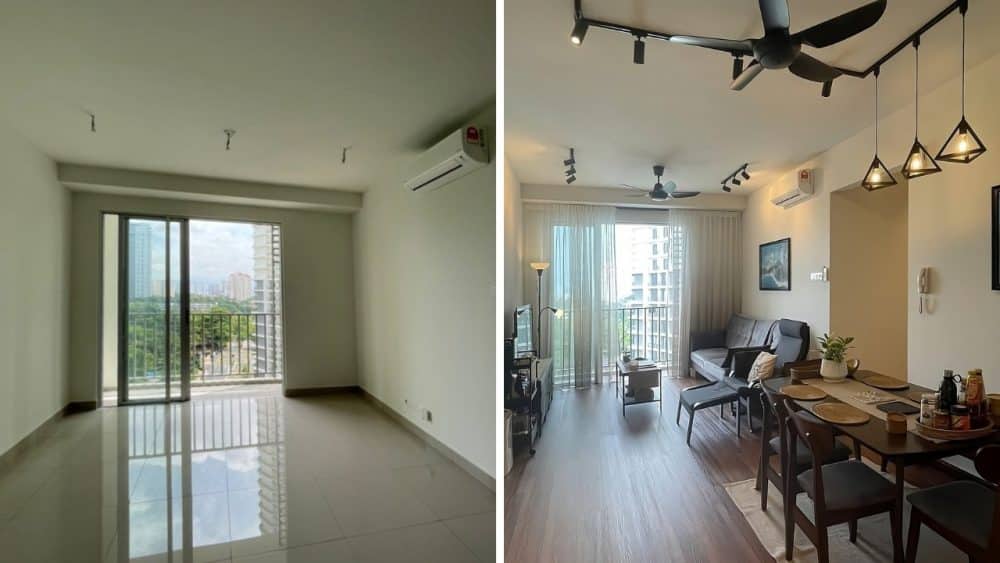Do you often wake up with a runny nose? Does your skin get more itchy at night, even after a shower? Do you get mild coughs or headaches that seem to last for weeks for no reason? Maybe it has something to do with your home.
Our personal environment can have a big impact on our health and well being. And since we spend a significant amount of time at home, it’s a good idea to make sure that it’s a healthier place to live in.
Table of Contents
Do You Have an Unhealthy Home Environment?
The link between ailing health and your physical environment is sometimes known as sick building syndrome.
People who are affected by this tend to have symptoms that include headaches, fatigue, eye and nose irritation and skin irritation. It can even trigger allergies and asthma.

Sick building syndrome is generally associated with the office, as the stresses of work can impact a person’s well being. But you can be affected in your home, too.
Researchers believe that an unhealthy home environment can come from a combination of physical factors, such as chemicals and toxins in the air; humidity levels; as well as glare or improper light levels.
Here are a few common factors you can address to prevent an unhealthy home environment:
1. Reduce Artificial Light and Glare
Research shows that the variation of light from day to night is nature’s way of regulating our body’s natural rhythm. And too much artificial light can impact your mood, sleep, and productivity.
It’s the same reason why reading your phone before bedtime is a bad idea.
To allow more natural lighting, consider getting a curtain expert to add day curtains instead of a single layer of blackout curtains to your windows. That way, you can draw the day curtains in the daytime, and still allow lots of light into your room.

If you want to take on a bigger project, you can hire a renovation company to add more windows or a skylight to your ceiling if you live in a house.
If you frequently use a computer screen at home, you should angle your monitor to reduce glare from all that extra natural light. Too much contrast and flicker from screens can cause eye strain, so one way to reduce this is to switch on a desk lamp to illuminate your desk as you work. Learn more on how to set up your home office.

2. Choose Low VOC Wall Paints
After a house has been painted, the “paint smell” will linger for many days. That smell is actually the chemicals in the paint evaporating and dispersing throughout the room.
The fumes that are released as the paint dries are also known as volatile organic compounds (or, VOCs). Different paints will release different types of VOCs, and different VOCs have been linked to different illnesses (even cancer), so don’t go into a room when the paint is drying.

For a new house, this is not a problem, since you can simply wait for the fumes to disappear before moving in. But, what if you’re already staying in the house, and need to paint a room?
In fact, some paints can continue to release VOCs over the years, long after you have moved in. These chemicals can irritate the eyes and nose, cause headaches, and even trigger allergies in children.
This concern has led to many paint manufacturers producing “low VOC” or “Zero VOC” paints. Sometimes marketed as odourless paints, these are suitable if you have to paint a room while staying in the house.
So the next time you hire a painter, ask them to quote you for low-VOC or zero-VOC paints.
3. Reduce Flickering Lights
LED lighting is becoming more and more common and affordable. In fact, IKEA decided to only sell LED products as of September 2015, ditching traditional compact fluorescent (CFL) and tungsten filament bulbs.
The reason that many manufacturers are turning to LED is also because they promise to reduce flicker. This is because flickering lights can cause headaches and even induce seizures in some people.

In simple terms, light flickering occurs because the electrical current in your house comes in high frequency waves (i.e. AC, or alternating current). When the frequency is low, our eyes can see the light flicker on and off as it is powered on and off many times a second.
Modern lightbulbs come with electronic components (called drivers, capacitors or ballasts) to smooth out the alternating electrical current and reduce flicker.
However, when low-quality LED lights, or incompatible electronics are installed, the flicker can become worse, and cause headaches and fatigue.
The lesson? Don’t skimp on good quality LED bulbs as you plan out your room lighting.
4. Improve Indoor Air Quality
The haze in Malaysia has become an annual occurence, causing the air outside to be polluted by thick smoke and fine particles. However, indoor air quality is something homeowners should be concerned about as well.
There are many sources of indoor air pollution, including VOC from paint (described above), mould and fungus, cigarette and cooking smoke, as well as glue and other adhesives.
Thus, it’s important for any home to have good ventilation.
Some homes install extractor fans in their kitchens and bathrooms, but many are also designing their home interior layout to allow for better ventilation.
This includes taking down divider walls to allow for more cross-ventilation, adding ventilation turbines on the roof, or even replacing parts of their ceiling with a metal grille so that air can move upwards and out.
Better ventilation also has the added benefit of cooling your home without the need for air-conditioning.
5. Remove Fungus Moulds
In 2008, the Sultan Ismail Hospital in Johor Bahru was infected with fungus along the walls and ceiling. This would be the second round of infestation, after the first infection caused the hospital opening to be delayed.

There are fungus spores in the air all the time. But, when the spores are present in large amounts, health problems can occur. Inhaling excessive quantities of spores may lead to allergic attacks, asthma, or respiratory infections.
The most common reasons for fungus infestation is moisture. This could be caused by a leaking pipe in the ceiling, under the sink, or inside the walls.
A dirty aircon unit, or one that is constantly leaking can also result in fungus. Left untreated, the fungus can spread to other parts of your house.
So, get that aircon fixed and serviced regularly, and call a plumber to inspect for signs of leakage.

6. Replace Asbestos Ceilings
Asbestos is a type of natural fibre that has been used as a building material since the 1890s.
However, asbestos can be dangerous when it is being drilled or gets damaged, as it may release fibre dust, contaminating the air and our food.
Most modern buildings use gypsum plasterboards in their ceilings instead of asbestos. However, asbestos roofing materials, cement pipes and other asbestos-containing products are still being widely used worldwide, including in Malaysia.
There is no easy way to tell whether your ceiling boards are made of plaster or asbestos, so it’s best to ask a reliable contractor for advice. And instead of replacing asbestos ceilings entirely, it is possible to seal the asbestos with paint, so that the dust cannot escape.

7. Regular Pest-control Maintenance
The newspapers were buzzing recently with the discovery of two rats in a crate of chillies at a supermarket, and a rat in a tray of bread at a bakery in Mid Valley.
And it’s not just disease-carrying rats that homeowners need to worry about. The recent outbreak of Zika virus worldwide has also added to the problems of homeowners already dealing with dengue outbreaks in their neighbourhoods.

Having regular pest-control maintenance service is especially important for landed properties. As the houses are linked and the drains are around your home, pests like rats, cockroaches, lizards and ants will have access to contaminate your home.
A professional pest controller will help in identifying and treating the root cause of the any pest problem at your home.
8. Minimise Exposure to Dust Mites
Dust mites look like microscopic spiders, and are one of the most common triggers of allergies in adults and children. According to this article:
Dust mites can be found by the millions in beds, carpets, pillows and sofas. They feed on the dead skin shed by humans and pets. They don’t bite, but in high enough concentrations, their droppings can irritate the skin and nasal passages.
Basically, dust mites love to feast on your dead skin while you sleep at night. And after they feast, they lay droppings that cause your skin to itch.
The best place to find dead skin is in your mattress, pillows and sofa. But if you vacuum the surface of your mattress with a regular vacuum, you may not be able to dislodge the dust mites, as they can cling on to the mattress fibres.

A better way to remove dust mites would be to sun the mattress regularly, or get it cleaned by a professional mattress cleaning company. They have the right tools to effectively get rid of dust mites, and treat your mattress with some liquids that prevent dust mites from repopulating.
9. Clean Your Water Supply
The tap water in Malaysia meets international standards adopted from World Health Organisation (WHO) standards and is safe to drink.
However, homeowners sometimes report that the water flowing out of their taps becoming brown or yellow, or has a metallic taste to it.
This can occur when the pipes bringing the water to your tap may leave traces of rust, sediment or other impurities. If you are worried about drinking these impurities, you can install a water filter at your tap.
On point to note: Syarikat Bekalan Air Selangor (Syabas) advises against people from installing water filters outside their home, near the water meter.
That’s because, if you filter the water before it reaches your water tank, you may also take away the chlorine that stops bacteria from growing in your water tank.
As such, if you do install a water filter outside, you should also remember to maintain it regularly. Also, you should hire a plumber to do clean your water tank regularly as well.
Conclusion
There are many factors that may contribute to an unhealthy home environment. These include the air we breathe, the water we drink, and the climate and light that we are exposed to.
But, with regular maintenance and cleaning of common areas in the house, we can improve the environment we live in, and make it a better one for us and our families.
 We all worry about making our homes a safe and healthy place to live in. But, we shouldn’t have to worry about hiring bad home contractors.
We all worry about making our homes a safe and healthy place to live in. But, we shouldn’t have to worry about hiring bad home contractors.
If you hire contractors through Recommend.my, you don’t just get the most reliable pros, you also benefit from buyer protection and insurance coverage.















Pingback: 7 Common Aircon Problems And How To Troubleshoot Them - Recommend Living
Pingback: Why You Should Install a Plaster Ceiling - Recommend LIVING
Pingback: How to design your office for better employee satisfaction and productivity - Recommend LIVING